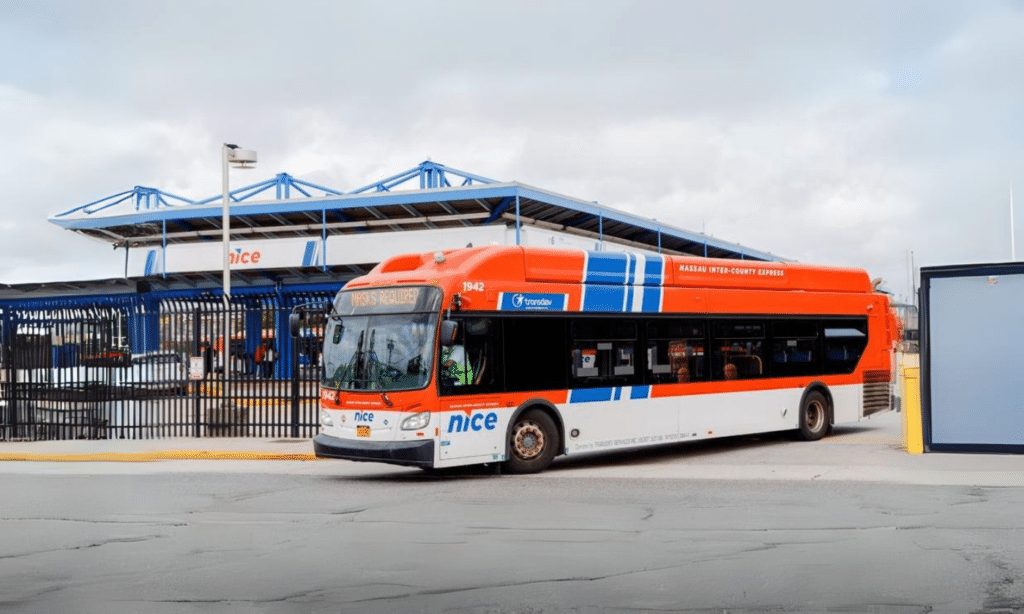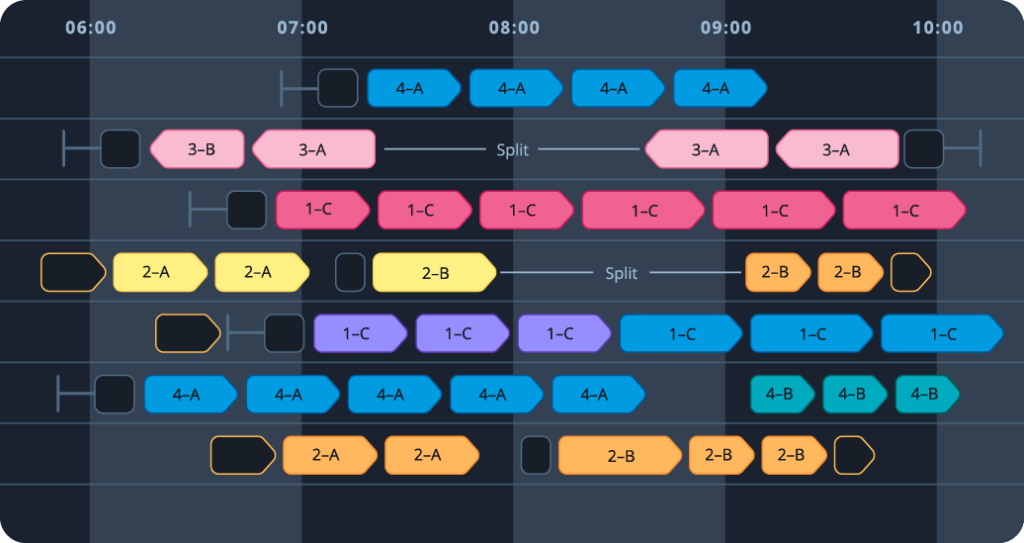Overview
Creating schedules with drivers’ wellbeing in mind leads to better driver satisfaction and retention. Using Optibus Scheduling, NICE Bus works to create schedules that offer the optimal work shifts, taking into account layover time, interlining, and platform time, while still considering operational and business needs.
Background
The Nassau-Inter County Express (NICE Bus) serves the passengers of Nassau County, New York. Since 2012, the system has operated as a public-private partnership between Nassau County and Transdev. Transdev, a private company, manages all daily operations on behalf of and under contract to Nassau County. It runs thirty-eight fixed bus routes operated by 422 drivers, serving 20 million passengers annually.

Challenges and Results
Hope Ann Smith is a senior transit planner and scheduler at NICE Bus. She started her career at age eighteen as a bus driver, eventually working her way up to driver training coordinator and dispatcher. Hope’s experience working as a driver and with drivers has shaped her approach to planning and scheduling. One of the greatest challenges is making schedules that satisfy both drivers and operational goals.
“Just because it looks good on paper doesn’t mean it works well on the street,” said Hope. “The service that we’re providing is being provided by humans just like me and you that have lives outside of work, that deserve a good workplace, that deserve people who know what they’re going through to create their work for them,” she added.
“I put a lot of thought into, does this schedule benefit the drivers, the admin staff and the customers that are using our service?”
How Optibus helps Hope create better driver schedules
Optibus has been with Hope since her first day as a planner and scheduler. She uses the software platform’s Planning, Scheduling, and Rostering products to bring her approach to driver schedules to life, quickly creating service plans that consider driver well-being.
“I was able to use it [Optibus] in a way that provides schedules that people want, and if they didn’t like it, I can quickly change it,” Hope explained.

When creating schedules in Optibus, Hope is looking at five key factors that she learned firsthand as a driver:
- Layover time: Ensuring that drivers have enough time during their break to do everything they need to do to get recharged, including getting a coffee, using the restroom, having a meal, stretching their legs or resting, all in a break location with the adequate facilities.
- Pre-trip time: Inadequacies in sign-on or sign-off times can cause operators to rush, which puts them, passengers, and pedestrians at risk.
- Interlining: Analyzing opportunities to switch up a driver’s route or driving environment makes the job more exciting, rather than driving the same route day-in and day-out
- Platform time: Creating work schedules that are not excessively long, and that respect work-life balance.
- Data about schedule performance: Runtime data shows whether drivers are able – or unable – to make it from point A to point B in the time allotted. When enough drivers can’t abide by the schedule, more runtime may be necessary.
Schedules that meet the company’s bottom line
Using Optibus, Hope can make data-driven decisions that prioritize the people behind the wheel while still accounting for operational efficiency and key performance indicators.
“It [Optibus] also gives you a chance to meet your departmental goals,” she added. “I still report to somebody that wants to see success. So, if we have to go back to the drawing board, we can. Having technology like Optibus gives me that chance to be like, ‘Okay. I’ll have something for you by the end of the week.’ You know? Done.”
For example, when trying to improve driver satisfaction through interlining, Hope can use Optibus Scheduling and its preferences capabilities to assess whether interlining also makes sense from an operational perspective, without creating unnecessary deadheading, for example.
Using Optibus, Hope is also able to leverage data about different scenarios and propose schedules and plans that are realistic. Once the schedule is deployed in reality, she can assess the schedule’s performance and, if needed, quickly make changes to improve the schedule.
“We use our data pretty much to kind of show where our operators are, where we need to improve, and where we can help them improve,” Hope explained.
“Us at NICE, we’re data geeks and we have operators who also love the data that comes out of the technology that we’re using,” she added. “It’s nice to share.”
- 20 million annual passengers
- 422 drivers
- Products: Planning, Scheduling, Rostering, EV
- Public transportation operator